Great Wall, one of the greatest wonders of the world, was listed as a World Heritage by UNESCO in 1987. Just like a gigantic dragon, the Great Wall winds up and down across deserts, grasslands, mountains and plateaus, stretching approximately 8,851.8 kilometers (5,500 miles) from east to west of China. With a history of more than 2000 years, some of the sections are now in ruins or have disappeared. However, it is still one of the most appealing attractions all around the world owing to its architectural grandeur and historical significance.
History of great wall
Early walls
The Chinese were already familiar with the techniques of wall-building by the time of the Spring and Autumn period between the 8th and 5th centuries BC. During this time and the subsequent Warring States period, the states of Yan and Zhongshan all constructed extensive fortifications to defend their own borders. Built to withstand the attack of small arms such as swords and spears, these walls were made mostly by stamping earth and gravel between board frames.
Qin Shi Huang conquered all opposing states and unified China in 221 BC, establishing the Qin Dynasty. Intending to impose centralized rule and prevent the resurgence of feudal lords, he ordered the destruction of the wall sections that divided his empire along the former state borders. To protect the empire against intrusions by the Xiongnu people from the north, he ordered the building of a new wall to connect the remaining fortifications along the empire's new northern frontier. Transporting the large quantity of materials required for construction was difficult, so builders always tried to use local resources. Stones from the mountains were used over mountain ranges, while rammed earth was used for construction in the plains. There are no surviving historical records indicating the exact length and course of the Qin Dynasty walls. Most of the ancient walls have eroded away over the centuries, and very few sections remain today. The human cost of the construction is unknown, but it has been estimated by some authors that hundreds of thousands, if not up to a million, workers died building the Qin wall. Later, the and Northerndynasties all repaired, rebuilt, or expanded sections of the Great Wall at great cost to defend themselves against northern invaders. The Tang and Song Dynasties did not build any walls in the region. The Liao, Jin, and Yuan dynasties, who ruled Northern China throughout most of the 10th–13th centuries, had their original power bases north of the Great Wall proper. Accordingly, they would have no need throughout most of their history to build a wall along this line. The Liao carried out limited repair of the Great Wall in a few areas, however the Jin did construct defensive walls in the 12th century, but those were located much to the north of the Great Wall as we know it, within today's Inner and Outer Mongolia.
Chinese Name: 长城/万里长城
Chinese Pinyin: Cháng Chéng/Wàn Lǐ Cháng Chéng
Length: 8,851.8 km (5,500 miles)
Construction Period: About 2,000 years from the Warring States Period (476 BC - 221 BC) to Ming Dynasty (1368-1644)
Having a wonderful Great Wall tour is a must for your China Trip. Want to discover the charm of the wall with TravelChinaGuide? Please see our Memorable Discovery Tours. Practical travel tips are offered including the best travel time, packing list as well as health and safety concerns.
|
|
The Wall we see today was mostly built during the Ming Dynasty (1368 - 1644). It starts from Hushan in the east to Jiayuguan Pass in the west traversing Liaoning, Hebei, Beijing, Tianjin, Shanxi, Inner Mongolia, Ningxia, Shaanxi, Gansu and Qinghai. Here lists the famous sections for you to know the incredible diversity of scenery along the wall and practical travel tips.
|
|
Excitement abounds regarding the vicissitude of the Wall of the Qin, Han, and Ming Dynasties.
The Great Wall was originally built in the Spring and Autumn, and Warring States Periods as a defensive fortification by the three states: Yan, Zhao and Qin. It went through constant extensions and repairs in later dynasties. It began as independent walls for different states when it was first built, and did not become the "Great" wall until the Qin Dynasty. Emperor Qin Shihuang succeeded in his effort to have the walls joined together to fend off the invasions from the Huns in the north. Since then, the Wall has served as a monument of the Chinese nation throughout history.
|
|
The mystery of the construction of the wall is amazing. The construction, which drew heavily on the local resources for construction materials, was carried out in-line with the local conditions under the management of contract and responsibility system. A great army of manpower, composed of soldiers, prisoners and local people, built the wall. The construction result demonstrates the wisdom and tenacity of the Chinese people.
|
Great Wall carries a considerable part of Chinese culture. It has long been incorporated into Chinese mythology and symbolism. The most well-known legend is about the collapse of a section of the Wall caused by Meng Jiangnu, who cried bitterly over the death of her husband after he died while building the wall. This legend has been spread widely through textbooks, folk songs and traditional operas.
|
Following a 45-day long survey of 101 sections of the Wall in different provinces, the China Great Wall Academy reported on December 12, 2002 that the forces of nature and destruction by mankind are bringing about gradual reduction of extent of the Wall with the result that less than 30% remains in good condition. The Academy has called for greater protection of this important relic.
Shandan Wall in Danger In July 2009, TravelChinaGuide (abbr. TCG) sent a survey group to investigate the condition of the Wall in Shandan County, Zhangye City, Gansu Province. This was our second visit there after 2002. The situation was alarming. After comparing the current wall to the wall pictures taken in 2002, it was found that many sections have become shorter, smaller or have disappeared! |
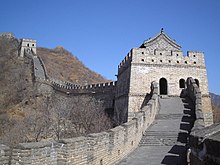
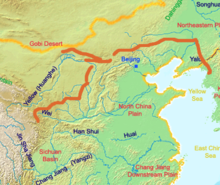

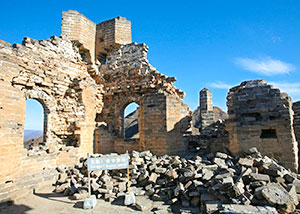
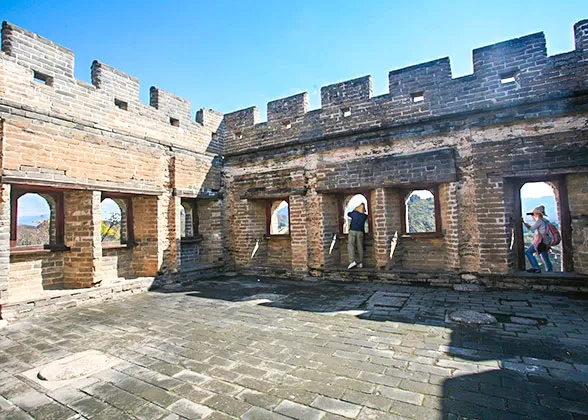
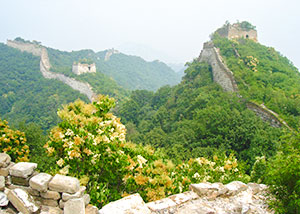
No comments:
Post a Comment